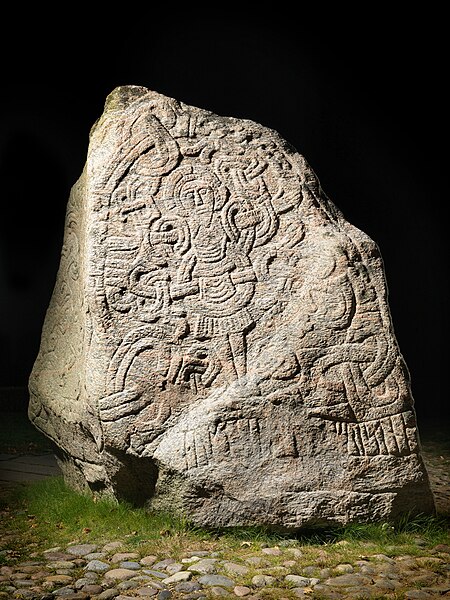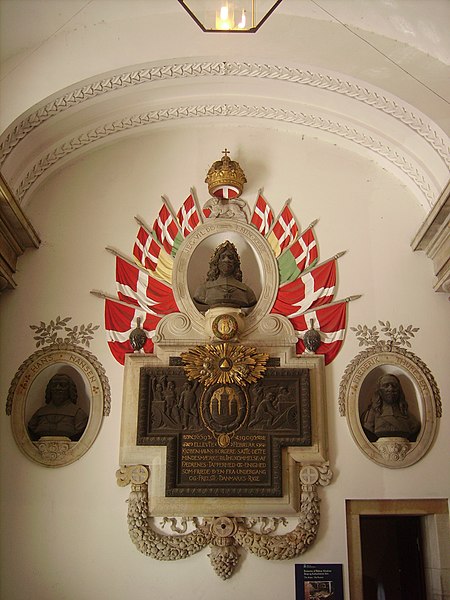Christian VIII of Denmark
Christian VIII was King of Denmark from 1839 to 1848 and, as Christian Frederick, King of Norway in 1814.
Portrait by Johan Vilhelm Gertner, 1845
Portrait of Charlotte Frederica by Carl Frederik von Breda c. 1806.
Christian Frederick in 1813, aged 27 years
Portrait of Christian Frederick, c. 1814
The monarchy of Denmark is a constitutional institution and a historic office of the Kingdom of Denmark. The Kingdom includes Denmark proper and the autonomous territories of the Faroe Islands and Greenland. The Kingdom of Denmark was already consolidated in the 8th century, whose rulers are consistently referred to in Frankish sources as "kings". Under the rule of King Gudfred in 804 the Kingdom may have included all the major provinces of medieval Denmark.
Monarchy of Denmark
One of the two Jelling stones, attesting to Harald Bluetooth's unification and Christianization of Denmark.
Memorial inside Christiansborg Palace. Depicted is Frederick III and the event commemorated is the failed Swedish attack on Copenhagen in 1659.
During the German occupation of World War II, King Christian X became a powerful symbol of national identity. This image dates from the King's birthday, 26 September 1940.








